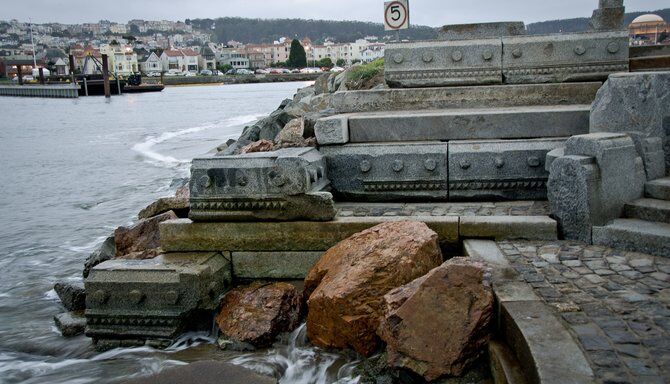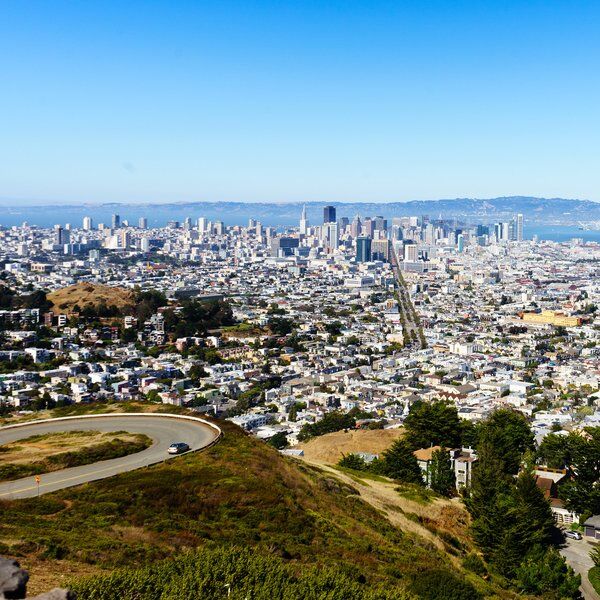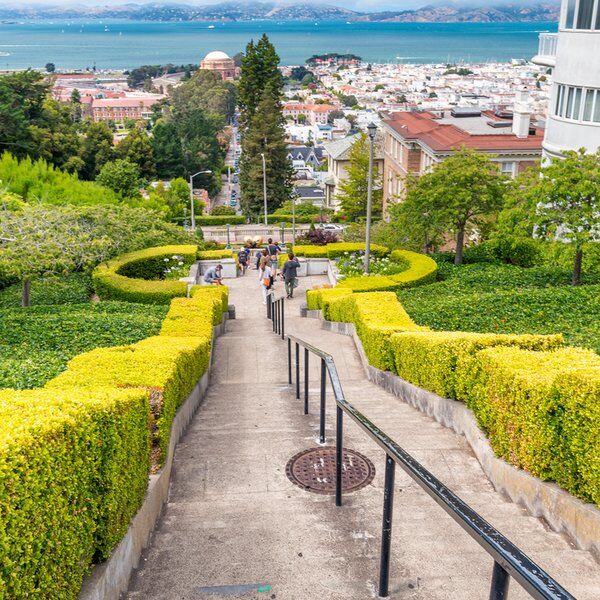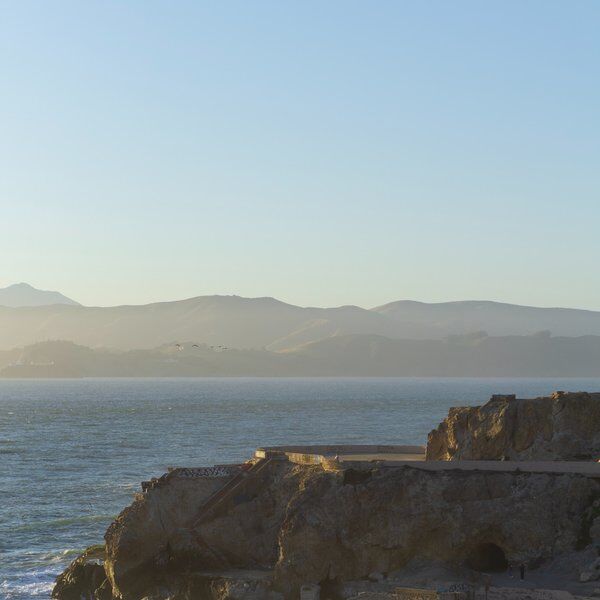Discover the Wave Organ in San Francisco
On a jetty in San Francisco Bay, the Wave Organ is a unique acoustic sculpture designed to amplify the natural sounds of the bay's waves. The organ is situated at the tip of a spit of land extending from the Golden Gate Yacht Club, offering panoramic views of San Francisco, the Fort Mason piers, and Crissy Field. It is composed of PVC tubes and 25 concrete pipes, placed in the water and capped with marble salvaged from San Francisco’s old cemeteries. This material gives the installation a historical touch, repurposing components of the past into structures that bring joy in the present.
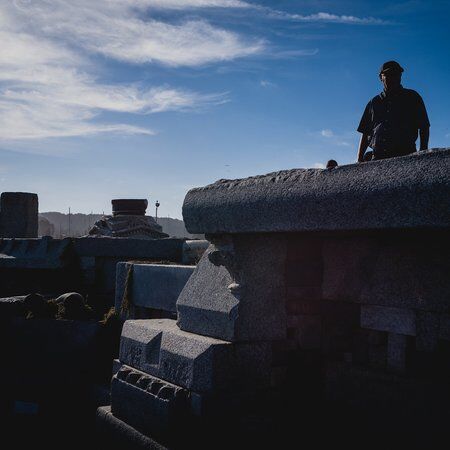
The Origins of the Wave Organ
In 1980, Peter Richards, a senior artist at the Exploratorium, received a planning grant from the National Endowment for the Arts. This grant allowed him to explore the concept of creating an acoustic sculpture that used natural wave sounds.
Inspired by artist Bill Fontana’s recordings of sounds emanating from a vent pipe in Sydney, Australia, Richards built a prototype of the Wave Organ at its current location. This prototype was showcased at the New Music ’81 Festival, garnering interest and support for a permanent installation. This led Frank Oppenheimer, the founding director of the Exploratorium, to begin acquiring permits and fundraising for the Wave Organ.
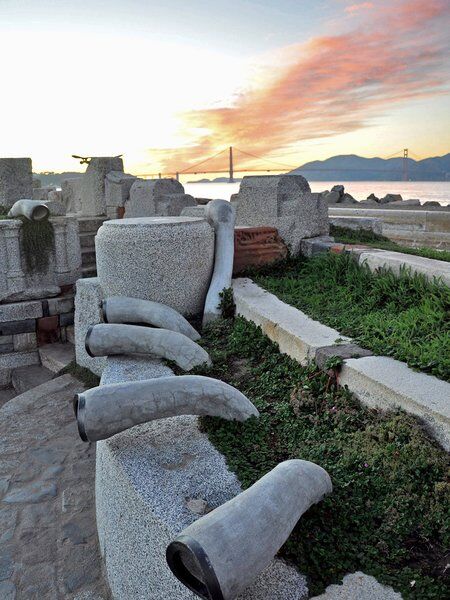
Creating the Wave Organ
The permanent Wave Organ that can be visited today was created by Peter Richards and sculptor and master stonemason George Gonzales. Construction started in September 1985 and was completed by May 1986. Unfortunately, in February 1985 Oppenheimer passed away, so he never got to see the project come to life. The finished Wave Organ was dedicated to his memory in June 1986.
Granite and marble, salvaged from San Francisco's demolished cemeteries around Lone Mountain, were used to create the irregular terraced seating and other elements of the jetty. Visitors can sit on the platforms and benches, which are strategically placed near the mouths of the pipes to enhance the listening experience. The installation includes 25 PVC and concrete pipes extending into the water at various elevations, designed to capture the sound of waves hitting the pipe ends.

The Sounds of the Wave Organ
“This place isn’t about hearing, really. It’s about listening.”
The sound produced by the Wave Organ is subtle and haunting, described by some as having a mournful quality due to the materials sourced from the cemetery. As waves crash against the pipes, they create low, rumbles, gurgles, sloshes, hisses, and other wave-related noises that ebb and flow with the movement of the ocean. The phenomenon is similar to the sound heard in a conch shell, where a specific volume of air resonates at a particular frequency. However, unlike a conch shell, the columns of air within the Wave Organ's pipes are constantly changing as water moves in and out.
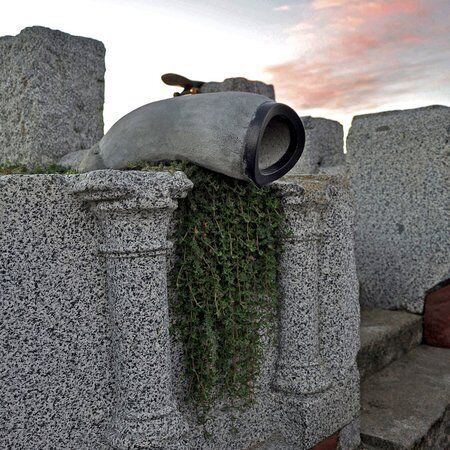
Experiencing the Wave Organ
Views and Setting
Visitors who venture to the Wave Organ are also treated to panoramic views of downtown San Francisco's skyline, the East Bay hills, Sausalito, Mt. Tamalpais, the Presidio, the Golden Gate Bridge, and the Marin Headlands. Located near Crissy Field Recreational Area, Marina Green, and the St. Francis Yacht Club, the Wave Organ is a peaceful escape within the busy city, much like Sutro Baths or Lands End Labyrinth, which also have amazing views. For those looking to relax, the site includes benches, so you can sit and soak in the surroundings.
For more locations with incredible views over the city (if you don’t mind working a little bit for it) why not visit 16th Avenue Tiled Steps or the Lyon Street Steps.
Interactive Experience
A standout feature of the Wave Organ is its interactive design. Visitors can walk on the structure and get close to the PVC pipes, experiencing the changing sounds from different locations. Putting an ear against a specific pipe enhances the auditory experience, though the water rarely splashes high enough to cause concern.
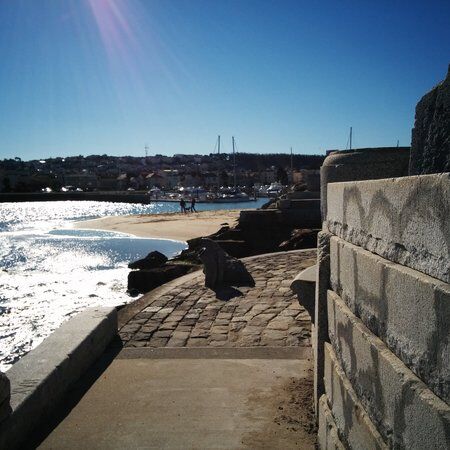
Best Time to Visit the Wave Organ
High Tide
The Wave Organ's acoustics are at their most active during high tide, which occurs twice a day. This is when the waves interact most effectively with the organ's 25 pipes, creating the unique, haunting sounds that define this installation. Therefore, it's essential to visit when the tide is in. As the tide rises and falls, the sounds produced by the pipes change. The U.S. government's NOAA Tide Predictions chart is a reliable resource for this information, ensuring you hear the organ's full range of sounds at high tide.
Full Moon
Visiting during a full moon can enhance the experience, as the tides are generally higher, amplifying the organ's acoustics. The dedication plaque on the Wave Organ itself suggests that the full moon tides provide an even more impressive auditory display. While not everyone may have the opportunity to visit during a full moon, aiming for high tide will still ensure a memorable experience.

Visiting the Wave Organ
The Wave Organ is easy to get to with a lovely view to enjoy along the way, but it is a little confusing. If you start to feel as though you’re heading onto private property, don’t worry, you aren't. Walk through the parking lot, down Yacht Road, and up ahead, you will see a stone tower. Stay to the left of the tower and continue down Yacht Road. You will find the Wave Organ at the end of this trail.
From Union Square: The easiest way to get here from Union Square is on the Muni 30 bus, exiting at the Mason Street and Yacht Road stop. Walk straight toward the water, then take a right to enter the parking lot. This route takes about 45 minutes.
From Fisherman's Wharf: You have three options to get here from Fisherman's Wharf. You can walk, take a taxi, or again take the Muni 30 bus. The walk between these two attractions is about 2.5 miles. It's mostly flat except for the large hill you need to climb as you walk into the Fort Mason Center. It's a beautiful walk with waterfront and Golden Gate Bridge views almost the entire way.

Discover Nearby Attractions with CityDays
After discovering the Wave Organ, visitors can explore other quirky art installations in San Francisco, like Andy Goldsworthy's Wood Line. Or, if you want to discover these areas in a more comprehensive way—with rest stops at cafes and bars along the way—why not embark on a CityDays Scavenger Hunt in San Francisco?
Scavenger Hunt tours are a great way to bring family and friends—or even dates—together for an afternoon of great fun and adventure, solving clues and snapping photos. Clues will lead you to the big sights and those that you'd walk straight past.
Our Garden in the Sky Hunt is the perfect way to experience the city, and results in the discovery of a hidden rooftop garden.
For more information about our San Francisco Scavenger Hunts then click here: Top 6 Immersive San Francisco Scavenger Hunts & Treasure Hunts | CityDays.
